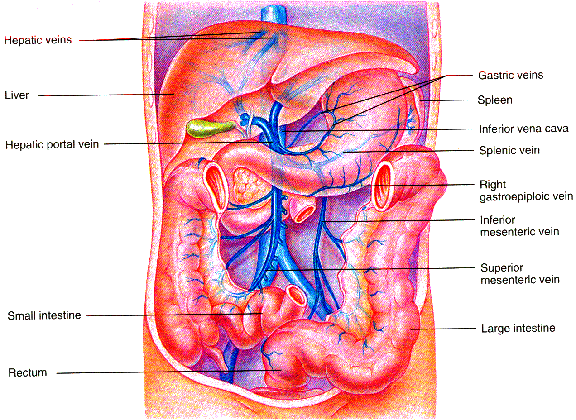The inferior vena cava, abbreviated as IVC, is alternatively known as posterior vena cava. The inferior vena cava is a large vein that enters the right atrium of the heart. It is one of the most significant veins in the human body tasked with transporting or carrying deoxygenated blood from the entire lower part of the body. In other words, the inferior vena cava carries blood rich in carbon dioxide from the abdominal region and legs to the heart.
The inferior vena cava enters the heart from its posterior side, or back side, beneath the right atrium. The vein then runs along the vertebral column and then connects to the renal vein. The inferior vena cava or posterior vena cava has some asymmetries because it doesn’t have a central positioning. The suprarenal and gonadal connect to the IVC on the right side but the same veins connect to the renal vein on the left.
The inferior vena cava is formed by two iliac veins, the right common and the left. These two veins collectively carry the deoxygenated blood into the right atrium of the heart. While the inferior vena cava carries carbon dioxide rich blood from the lower half of the body, the vein that does so for the upper half of the body is called superior vena cava. The inferior vena cava is connected to many tributaries and venous networks, such as the hepatic veins, inferior phrenic vein, right suprarenal vein, renal veins, right gonadal vein, lumbar veins and common iliac veins.
The inferior vena cava is formed right at the embryo stage when the latter develops. During its development and in its nascent stages, the IVC connects to the right atrium but has a separation known as the Eustachian valve. As the vein develops further and one becomes an adult, this valve gets partially or total regressed.
The inferior vena cava is a very significant vein in the human body (see: inferior vena cava functions). It is responsible for the circulation of deoxygenated blood from the entire lower half of the body which thereon facilitates oxygenated blood to be carried to the entire lower half of the body.
There are several health problems that can affect the proper functioning of the inferior vena cava and the vein itself has several ailments. The most common problem with inferior vena cava is a compressed vein. This vein can get compressed due to physical injury or due to physical deformity and due to some pressures exerted typically by the gravid uterus, an enlarged aorta or due ovarian cancer, renal cell carcinoma and colorectal cancer among others. However, the vein doesn’t rupture easily.
The inferior vena cava is vulnerable to strains and any kind of physical stress to it or to the right side of the vertebral column can cause some trauma to this vein. If the inferior vena cava develops an occlusion then it can be fatal. Deep vein thrombosis is also not uncommon. Any major trauma of this vein may lead to exsanguinations.
